Are you having trouble with your spincast reel? If so, you’re not alone. Many anglers struggle with fixing their spincast reels when they encounter issues such as tangled line or a jammed mechanism.
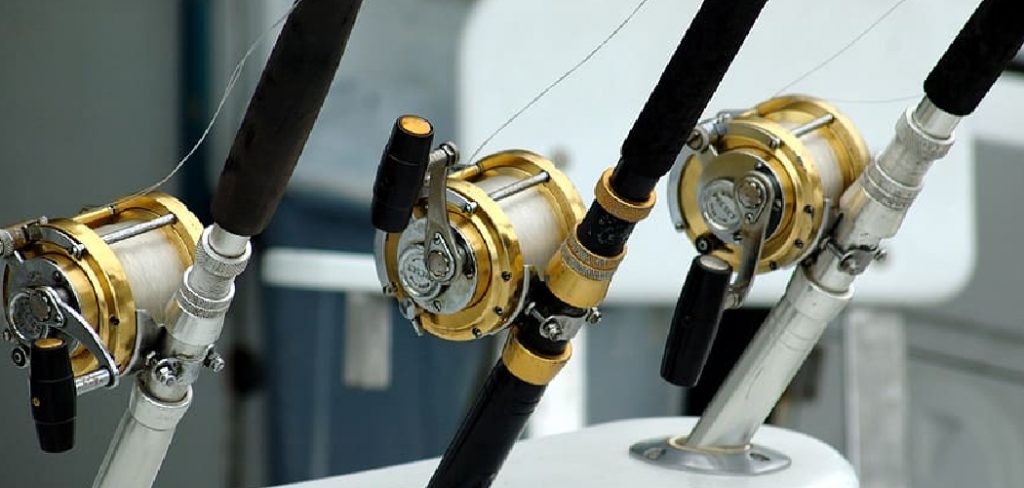
A spincast reel is a popular choice among anglers due to its simplicity and ease of use. However, like any fishing equipment, it can occasionally face issues that require maintenance or repair. Common problems include tangled lines, malfunctioning drag systems, or difficulty casting. Knowing how to fix spincast reel can save you time, money, and frustration while ensuring your reel operates smoothly for your next fishing trip.
This guide will walk you through the essential steps to troubleshoot and repair a spincast reel, helping you restore its performance and extend its lifespan.
What Are the Causes of Spincast Reel Issues?
There are several reasons why your spincast reel may not be functioning correctly. The most common causes include:
- Tangled Line: This happens when the fishing line becomes twisted, knotted, or caught in the reel’s internal components.
- Dirty or Damaged Drag System: Over time, dirt, grime, and debris can build up on the drag system, affecting its smoothness and causing it to malfunction.
- Wear and Tear: With frequent use, parts of the spincast reel can become worn out or damaged, leading to performance issues.
- Improper Usage: Not using the spincast reel according to instructions or mishandling it can also lead to problems and potential damage.
- Lack of Maintenance: Regular maintenance is necessary for any fishing equipment, including spincast reels. Neglecting to clean, lubricate, and replace worn-out parts can result in malfunctions.
What Will You Need?
To properly maintain your spincast reel, you will need a few materials:
- Clean water or mild soap solution for cleaning
- Appropriate lubricant for the reel’s moving parts
- Soft cloth or brush for scrubbing and wiping down
- Replacement parts (if needed)
It is important to use the correct materials and follow proper maintenance procedures to ensure the longevity and optimal performance of your spincast reel.
10 Easy Steps on How to Fix Spincast Reel
Step 1: Gather Your Tools
Before starting the repair process, ensure you have all the necessary tools and materials within reach. This includes a screwdriver to open the reel casing, a soft cloth for cleaning, a small brush for hard-to-reach areas, a lubricant suitable for fishing reels, and any replacement parts that might be required. Having everything prepared will make the repair process smoother and more efficient.
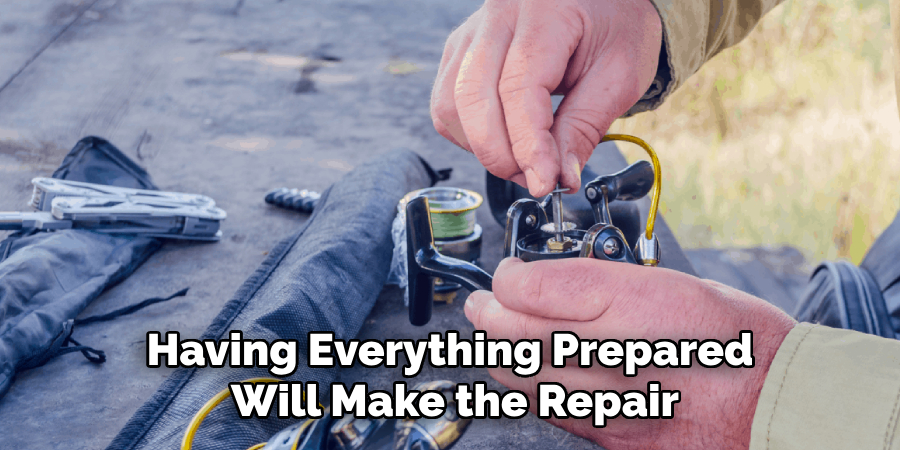
Step 2: Disassemble the Reel
Carefully unscrew and remove the outer casing of the spincast reel using the screwdriver. Place the screws in a safe spot to avoid losing them. Once the casing is off, take note of the internal components’ arrangement, or consider taking a photo for reference. Gently detach the spool, handle, and any other removable parts. Work slowly and methodically to prevent damaging any delicate components during the disassembly process.
Step 3: Inspect the Components
Inspect each component of the spincast reel carefully for signs of wear, damage, or buildup of dirt and grime. Check the spool for any tangles or worn-out fishing line. Examine the gears and bearings for rust, corrosion, or debris that could hinder smooth operation. Pay close attention to the handle and any moving parts to ensure they rotate freely without resistance. If you notice any damaged components, consider replacing them with compatible parts. Use a clean cloth or brush to wipe away dirt or old lubricant, ensuring everything is clean and ready for reassembly.
Step 4: Clean the Reel
Begin by disassembling the reel carefully, keeping track of all the parts to ensure proper reassembly. Use a soft cloth or a small brush to wipe away any dirt, grease, or salt buildup from the reel’s body and internal components. For hard-to-reach areas, a cotton swab or toothpick can be useful. Apply a reel-specific cleaning solution or mild soap with warm water to gently remove stubborn grime, but avoid submerging the reel completely in water. Once the reel is clean, rinse it lightly with fresh water and dry it thoroughly with a lint-free cloth to prevent moisture from causing corrosion. This process helps maintain the reel’s longevity and ensures optimal performance during future use.
Step 5: Repair or Replace Damaged Parts
Inspect the reel carefully for any signs of damage or wear, such as cracked components, bent handles, or worn-out gears. Replace parts that are excessively damaged or no longer functional. Consult the reel’s manual or visit the manufacturer’s website to ensure you purchase the correct replacement parts. If the damage is beyond your repair skills, consider taking the reel to a professional repair service. Properly addressing damaged components will restore functionality and prevent further issues while extending the life of your fishing reel.
Step 6: Lubricate the Components
Apply a high-quality reel lubricant to the moving parts of your fishing reel, such as the gears, bearings, and spool shaft. Proper lubrication reduces friction, ensures smooth operation, and protects against rust and corrosion. Use a small amount of lubricant to avoid over-oiling, which can attract dirt and debris. Refer to the reel’s manual for guidance on which specific areas require lubrication and the recommended type of oil. Regular lubrication will enhance the performance of your reel and prolong its lifespan.
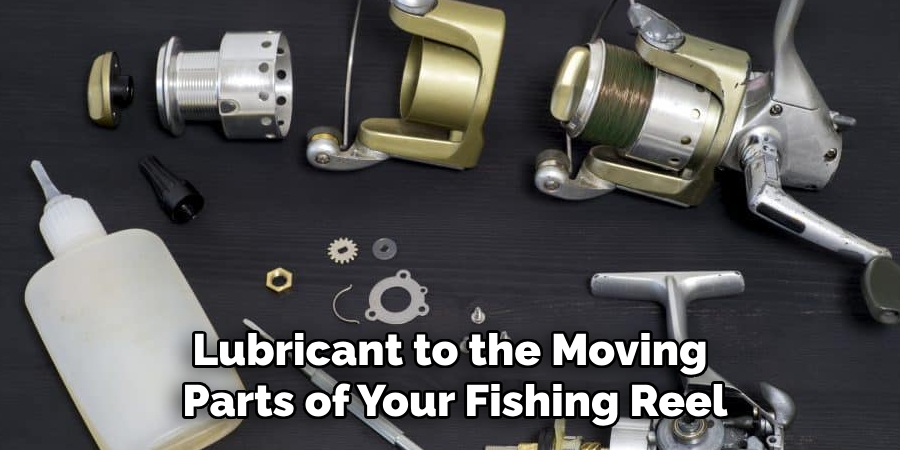
Step 7: Reassemble the Reel
Once all the components of your fishing reel are clean, dry, and properly lubricated, it’s time to put everything back together. Refer to the reel’s manual or diagrams to ensure each part is reassembled in the correct order. Start by carefully aligning the internal components, such as gears and bearings, before securing the external panels or casing. Use the appropriate tools to tighten screws without over-tightening, as this can damage the threads or parts. Once reassembled, turn the handle to check for smooth operation and ensure all components are functioning as expected. This step completes the maintenance process, preparing your reel for optimal performance on your next fishing trip.
Step 8: Test the Mechanisms
To ensure your reel is functioning properly, carefully test all its mechanisms before heading out to fish. Start by gently turning the handle to check for smooth and consistent movement. Pay close attention to the drag system by adjusting it to various settings and pulling on the line to confirm it responds appropriately. Additionally, test the spool release and ensure it engages and disengages without resistance. If you notice any unusual noises, stiffness, or issues during testing, revisit the assembly process to address potential misalignments or loose components. Thorough testing will give you confidence in your reel’s readiness for your next fishing adventure.
Step 9: Respool the Line
Respooling your fishing line is a critical step to ensure smooth casting and reeling during your fishing trips. Start by selecting the appropriate line for your fishing needs, such as monofilament, fluorocarbon, or braided line. Attach the line securely to the reel’s spool, typically using an arbor knot, and ensure it is firmly in place. Slowly begin winding the line onto the spool, maintaining consistent tension to prevent tangles or uneven layering. Fill the spool to the recommended capacity, leaving approximately 1/8 inch of space from the rim to avoid overfilling.
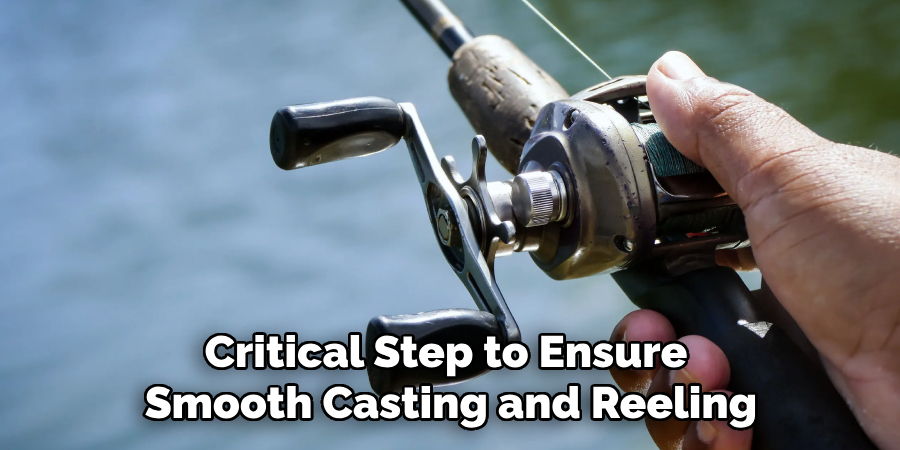
Step 10: Perform a Final Inspection
Inspect your fishing reel carefully to ensure everything is in proper working order before heading out. Check that the line is spooled evenly and without any visible tangles or knots. Test the drag system by pulling on the line to confirm it operates smoothly and at the desired resistance. Ensure all components, such as the handle, spool, and bail, are securely attached and functioning correctly. Finally, wipe down the reel with a clean cloth to remove any dust or debris, leaving it ready for your next fishing adventure.
By following these steps, you can maintain your fishing reel in optimal condition and prolong its lifespan.
5 Things You Should Avoid
- Forcing the Reel Apart
Avoid using excessive force to disassemble the reel. If parts are stuck, gently loosen them rather than prying or yanking, as this could lead to permanent damage to the components.
- Using the Wrong Tools
Using inappropriate tools, like kitchen utensils or makeshift screwdrivers, can strip screws or damage delicate parts of the reel. Always use proper tools designed for reel maintenance.
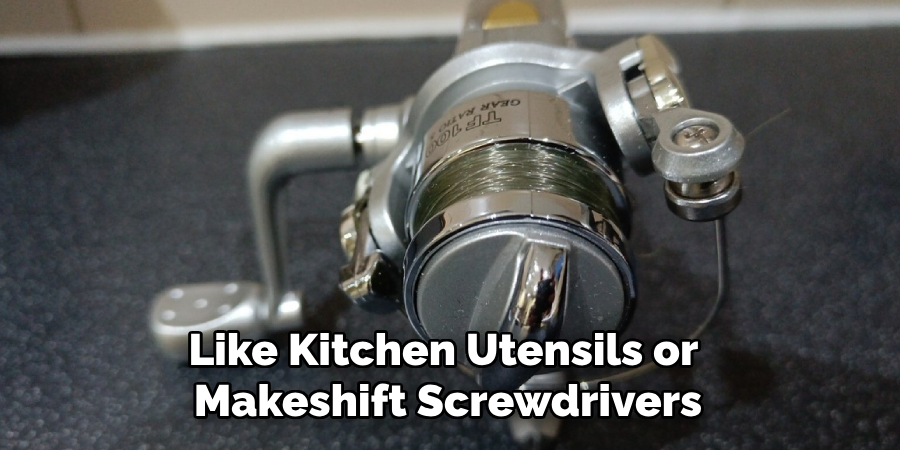
- Over-Lubricating the Reel
Applying too much lubricant can cause more harm than good. Excess oil or grease can attract dirt and debris, which may clog the reel’s mechanism and impair its performance over time.
- Ignoring Manufacturer Guidelines
Failing to consult the reel’s manual or the manufacturer’s recommendations when fixing or maintaining it can lead to improper handling or assembly errors, which may void any warranties or worsen the issue.
- Skipping a Thorough Cleaning
Attempting to fix a spincast reel without first cleaning it properly can lead to misdiagnosis of the problem. Dirt and debris may obstruct parts, so ensure the reel is clean before troubleshooting.
Conclusion
How to fix spincast reel requires patience, proper tools, and attention to detail.
By following the manufacturer’s guidelines, thoroughly cleaning the reel, and inspecting all components for wear or damage, you can effectively address most common issues. When in doubt, seek professional advice or replacement parts to ensure the reel functions optimally.
Proper maintenance and care will not only extend the lifespan of your spincast reel but also enhance your fishing experience.
